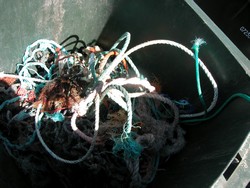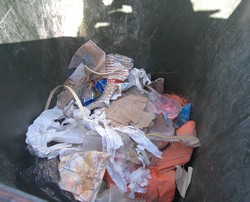| Robe Litter Survey |
|
Introduction Methods References Data entry Results |
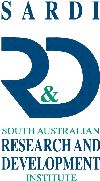 |
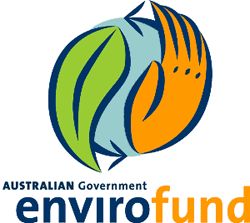 |
 |
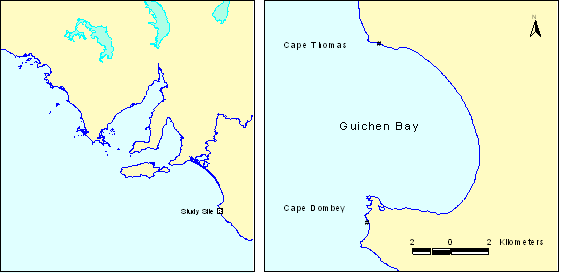 Methods
Methods
The Robe litter survey is an annual event that takes place on Long Beach, Guichen Bay (see map) and involves the systematic clearance of all litter from the 12 km beach, and separation into litter types. The survey is generally undertaken in the month of September to allow winter swells to wash ocean based litter onto the beach. Prior to the survey, the beach is separated into twelve, one kilometre sections, separated by labelled stakes. Within each one kilometer section, small groups of volunteers collect all visible, man-made litter from the beach.
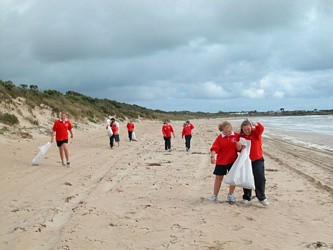 |
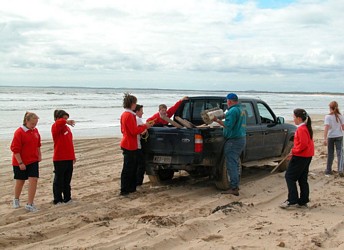 |
Once collected the litter is transported to the nearby ramp (Second ramp), where it is classified as either hard plastic (i.e. moulded), soft plastic (i.e. flexible), glass, metal, wood (processed wood only), cloth, rubber, paper or foam. Examples of the type of litter collected within each classification are outlined in the table below.
Litter Classification
|
Examples of litter |
| Hard Plastic (moulded) | 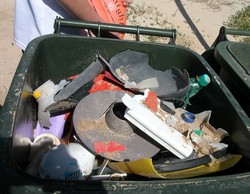 Liquid
containers (eg bottles, tops, fragments), drums, buckets, crates,
boxes, bait/burley baskets, crayfish pot necks, buoys, floats. Liquid
containers (eg bottles, tops, fragments), drums, buckets, crates,
boxes, bait/burley baskets, crayfish pot necks, buoys, floats. |
| Soft Plastic (flexible) | Bags and polyethlene sheeting, rope, nets, cod-ends, fishing line, bait straps, buoys and floats, six-pack holders, polystyrene.
|
| Glass | 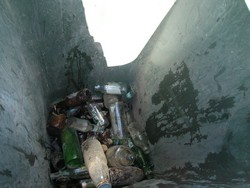 Bottles,
jars, light globes, lights, fluorescent tubes. Bottles,
jars, light globes, lights, fluorescent tubes. |
| Metal | 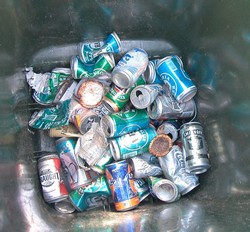 Cans
(food and drink), drums (oil containers), floats and buoys, aerosol
cans. Cans
(food and drink), drums (oil containers), floats and buoys, aerosol
cans. |
Wood |
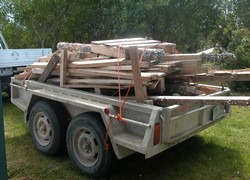 Large
permapine planks and posts and wooden crates. Does not include wood
from natural processes eg. drift wood. Large
permapine planks and posts and wooden crates. Does not include wood
from natural processes eg. drift wood. |
| Paper and Foam | 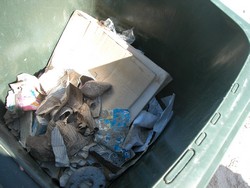 This
category of litter includes paper, cardboard and foam. This
category of litter includes paper, cardboard and foam.Cloth Included cloth rags, and discarded clothing. |
| Other | This category included all other litter that could not be placed in the other classifications and included rubber products e.g. tyres, thongs. |
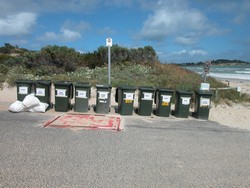 Following
classification, the litter is placed into appropriately labeled wheelie
bins, and then transported to a near by location where the contents are
weighed and recorded onto a data sheet (download
PDF of the data sheet). For appropriate disposal or recycling of the
litter collected, please contact the District
Council of Robe.
Following
classification, the litter is placed into appropriately labeled wheelie
bins, and then transported to a near by location where the contents are
weighed and recorded onto a data sheet (download
PDF of the data sheet). For appropriate disposal or recycling of the
litter collected, please contact the District
Council of Robe.
The recorded survey data can then be simply entered into the online database by selecting the Data Entry page.
